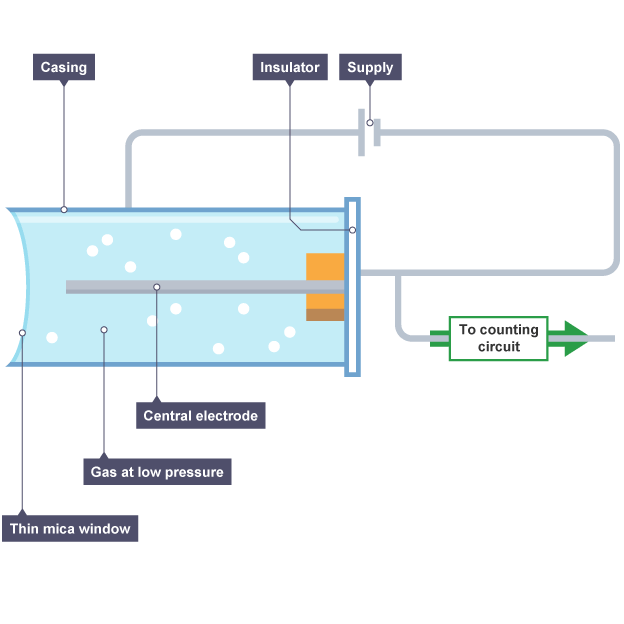How does a Geiger Müller tube work to detect nuclear radiation?
1 Answer
This isn’t simple, but I’ll try and then give a diagram and reference ... off we go!
Explanation:
A G.M. tube is a detector of ionising radiation that works on the principle of ‘avalanches’ of electrons accelerated by a high electric field. The field exists between the neutral case and a central ‘spike’ at a p.d. (voltage) of several hundred volts (typically +400-600V.) When an
The electron accelerates rapidly in the strong electrical field and collides with other atoms, liberating further electrons from them. The effect repeats until a burst of current arrives at the central spike. This is the ‘avalanche’ of electrons.
There is another difficulty in detecting all 3 types of radiation, the
So that the detector can “reset” it is necessary to have a quenching agent present to ‘mop up’ the remaining electrons after a detection (normally a halogen, such as bromine.) This takes up to
Your diagram should help visualise it all:

And the reference (gives loads more details): https://en.m.wikipedia.org/wiki/Geiger%E2%80%93M%C3%BCller_tube hmmm that didn’t work (Socratic doesn’t like the formatting of Muller!) just stick Geiger Muller tube into Wikipedia!

